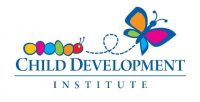Every parent hopes that their child will live a long, healthy life. Unfortunately that isn’t always the case. Some children are born with Cerebral Palsy (CP), a number of disorders affecting the brain as it develops. If youíre unfamiliar with this condition, read on to find out more. Cerebral Palsy is caused by damage to one or more areas of the brain. Quite often the damage occurs while the child is still in the womb, during the birth process, or shortly afterward. It can also be caused by brain tumors or meningitis. It nearly always includes some type of motor impairment but can also develop into mental retardation in severe cases. How widespread is this condition? By 2001 there was an estimate of 764,000 children and adults in the United States alone; estimates are not known for the rest of the world. It is estimated nearly 10,000 more babies to pre-school age children are diagnosed each year in America. Cerebral Palsy falls into one of three main types: Ataxic CP, Athetoid CP, and Spastic CP. Some children or adults will have only one type of CP, while some will have a combination of two and others will have a combination of all three.
- Ataxic CP is caused by damage to the cerebellum, which controls balance; this is the rarest of the three types. Children with this type of CP have difficulty co-ordinating movements and balance.
- Athetoid CP is caused by damage to the basal ganglion and causes uncoordinated, involuntary, and uncontrolled muscle movement. Children with this type of CP may be able to walk but often stumble. It is also characterized by twisting of the fingers and wrists.
- Spastic CP is caused by damage to the cortex which controls movement and sensation. It is the most common type of CP and results in tight muscles in the arms and legs. Children with this type of CP can avoid being placed in a wheelchair if their muscles are exercised properly.
Risk factors associated with Cerebral Palsy include, but are not limited to, premature birth, improper oxygen through the placenta while the infant was developing, bacterial infection in the mother while pregnant, and prolonged oxygen loss during birth. Severe jaundice after birth, RH or A-B-O blood incompatibility between the mother and child, and the mother being infected with German measles during the beginning of her pregnancy are other possible risk factors. Unfortunately, at this time there is no cure for CP due to the fact that brain damage cannot be reversed. With training and therapy, however, muscle function and co-ordination can be improved. Learning more about this condition, it might help you to understand what causes it. If you have children, you can explain to them why some children and adults have this disability. More information from Medline.

